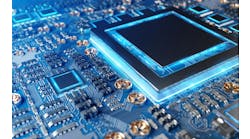Open-platform-communications (OPC) technology is client/server-based. One program serves as a data server, while the other functions as a client, requesting data from the server.
A service is defined as data from the server that the client utilizes to carry out a task. Typically, remote procedure calls are used to implement service applications. Because multiple hardware and software implementations may be used without changing service behavior, this offers benefits. In contrast, polling-based systems demand standardized hardware across all devices.
Also read: 3 HMI configurations for hazardous areas
A desktop PC application, a field remote terminal unit (RTU), a human-machine interface (HMI) station and a shop-floor programmable logic controller (PLC) may all communicate data continuously thanks to an OPC server.
As a result of OPC, user and technology-provider collaboration has improved. OPC has enabled automation companies to create genuinely open solutions, giving users additional options in their automation applications. Accessibility is ensured by the development and maintenance of non-proprietary open standards specifications.
The original OPC standard definition was developed in partnership with Microsoft by a group of global automation providers. Originally based on Microsoft’s component-object-model (COM) and distributed-component-object-model (DCOM) technologies, it specified a standard collection of objects, interfaces and methods for use in process-control and factory-automation systems to ease interoperability.
In 1994, a group of industrial suppliers spanning a range of disciplines founded what is now known as the OPC Foundation, which set out to provide a single client/server protocol that would enable any vendor to create software and applications that could transfer data in a quick and reliable manner and do it in a way that would eliminate the proprietary schemes that required these same businesses to duplicate development efforts.
The initial standard, known as OPC Data Access specification, was created by the OPC Foundation and issued at the start of 1996. Using this standard, vendors were able to construct client/server software. Eliminating the requirement for client application providers to create their own proprietary collection of communications drivers was a fundamental objective of the OPC Foundation and the Data Access standard.
For many suppliers, the work needed to create various communications drivers, which was more time-consuming than creating the client application itself. The Data Access standard specifies how to build both the client and server application interfaces.
A client vendor understands that any OPC server that is available for an industrial device can offer the connection required for data access if the standard is followed correctly. OPC applications are no longer constrained by issues like time-to-market or dependability.
OPC has added the advantage of allowing end users to pick best-of-breed software to solve application challenges. Historically, if the application software did not include the needed communication driver, or if the present driver did not function satisfactorily, the only option was to persuade the application vendor to either design the desired driver or repair an existing driver.
OPC servers are offered by several manufacturers, and an OPC client can connect to one or more servers. Each server's access points, data names and specifics of how the server physically accesses the data are all determined by vendor-supplied code.
An OPC server consists of three objects: the server, the group and the item. The OPC server object stores information about the server and acts as a container for OPC group objects. The OPC group object contains and logically organizes OPC objects by storing information about itself. Clients can arrange data using OPC groups. For example, the group might represent things in a certain report or operator display. Data may be read, as well as written. Exception-based connections between the client and the objects in the group can also be formed and deactivated as needed.
An OPC client can specify the frequency with which an OPC server should provide data updates to the OPC client. When it comes to creating an OPC server, there are some special concerns. The fundamental issue is the frequency of data transfer to physical devices via non-shareable communications routes. As a result, we anticipate that the OPC server will be either a local or remote .exe that incorporates code responsible for efficient data-collecting from a physical device.
Through the OPC custom and automation interfaces, an OPC client application talks with an OPC server. OPC servers must implement the custom interface and, if desired, the automation interface.
The server is also expected to consolidate and optimize data accesses requested by the numerous clients in order to facilitate optimal connection with the physical device. Data delivered by the device for inputs (reads) is buffered for asynchronous dissemination or synchronous collection by multiple OPC clients. For outputs (writes), the OPC server changes the physical device data on behalf of OPC clients. With OPC UA there is the ability to totally automate from the floor level of manufacturing to the office level.





